Patients are sharing their stories in an effort to educate other stakeholders, and the pharma industry is using that knowledge sharing to improve on messaging and patient interaction.
Patient stories are being used to illustrate organizations’ brand, services, and successes. Hospitals are using them to inform and attract patients. Healthcare systems, clinics, and physicians are using them as education tools. Pharma companies, CROs, agencies, patient communities, and patients themselves are all leveraging the effectiveness of real-life patient stories to spread knowledge, empathy, and understanding. Social media platforms on the web have provided 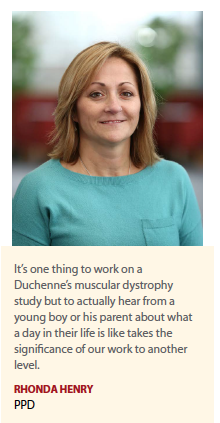 the perfect venues for sharing stories and the proliferation of patient communities has also ignited more patients to come forward with their stories in order to make an impact. The trend is to use platforms to provide a way for patients, caregivers, and healthcare staff to share stories and develop solutions across the health system, and these platforms are disrupting the traditional methods of engaging with patients, reports The Stanford Social Innovation Review.
the perfect venues for sharing stories and the proliferation of patient communities has also ignited more patients to come forward with their stories in order to make an impact. The trend is to use platforms to provide a way for patients, caregivers, and healthcare staff to share stories and develop solutions across the health system, and these platforms are disrupting the traditional methods of engaging with patients, reports The Stanford Social Innovation Review.
This sharing of patient stories is crucial because the stories provide the bridge between patients and the pharmaceutical industry, as well as all other stakeholders.
“There is no doubt that the power of the patient voice is louder and stronger than it ever has been, and it is going to continue to become one of, if not the greatest influence over healthcare decision-making in the next few years," says Ben Beckley, president of Cambridge BioMarketing. “This is especially important in rare disease, and we see the patient voice being leveraged in many of the campaigns we create for our clients. We’ve partnered with patients and advocacy groups, and this will only continue to become more prominent."
According to an article by Strategy&, the prime importance of creating these networks is highlighted by Inspire, a platform hosting various rare disease communities, where the number one benefit mentioned by the roughly 350,000 members is emotional support followed by friendship and a place to share feelings and be understood.
“Having access to authentic patients on forums enables both listening for the real-world voice and direct active engagement," says Jeff Terkowitz, VP of product at Inspire. “Moreover, it reveals how important caregivers are to patients and the decisions they make."
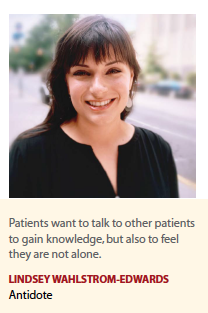 According to Lindsey Wahlstrom-Edwards who heads up partnerships at Antidote, patients want to talk to other patients to gain knowledge and feel that they are not alone. “Our survey revealed that when asked what would make them feel more like partners in research as opposed to being just a participant, 80% of patients answered, ‘talking to other patients like me who have taken part in a clinical trial,’" she says. “And this connection starts with the sharing of a story. Having an illness can be scary, overwhelming, and even lonely. Knowing someone else who has faced the same disease is a comfort — and even an inspiration."
According to Lindsey Wahlstrom-Edwards who heads up partnerships at Antidote, patients want to talk to other patients to gain knowledge and feel that they are not alone. “Our survey revealed that when asked what would make them feel more like partners in research as opposed to being just a participant, 80% of patients answered, ‘talking to other patients like me who have taken part in a clinical trial,’" she says. “And this connection starts with the sharing of a story. Having an illness can be scary, overwhelming, and even lonely. Knowing someone else who has faced the same disease is a comfort — and even an inspiration."
There has been an increase in forums that offer two-way dialogues, ranging from social media influencers to podcasts to online communities built by companies such as Health Union, says Kevin Dunn, senior VP, client engagement and strategy, LevLane Life Sciences. “There are strong, broad reaching user-generated content sites such as PatientsLikeMe that provides a valuable forum for numerous disease states," Mr. Dunn says. “Whether it’s a lifestyle drug, a rare disease, pain management, or a chronic condition, consumers are more exposed to education and engagement vehicles than ever before."
Patient leader and advocate Teresa Wright-Johnson has been sharing her story on her own blog, as a public speaker, and in front of legislators for years. “Stories are the connective tissue of people, organizations, and the industry," she says. “It has been my experience that when sharing my story authentically, and when I am clear about my goals and what’s important in my community, it is a teachable moment and a valuable experience."
Ms. Wright-Johnson says she has observed an increase in pharma companies bringing patient stories into marketing and clinical areas, but there is still room for much more. Patient advocate Kristal Kent agrees, noting that from her personal observation, she has found some pharma companies that have done a fantastic job at engaging patients and sharing their stories.
“Unfortunately, there are still many pharmaceutical companies that fall short in integrating the patient voice and their stories," she says.
Dawn Hastings, VP, creative director at Dudnyk, agrees that the industry can be doing more. “This is an area of pharma marketing that I don’t believe has changed much and that could benefit from some fresh thinking and new approaches to engage the patient audience," she says. “In rare diseases, individualized one-on-one engagement still rings true as a useful and effective method and, more importantly, positions the marketer or brand as a provider of personalized service and care."
Instilling regularly scheduled patient forums, committees, and advisory boards are helpful ways for marketers to learn detailed information about their audience, as well as gain guidance on the best way to craft patient messaging. With today’s technology, recruiting patients and putting together these types of group forums is the easiest and most cost-effective it has ever been; with web conferencing and social media, marketers no longer need to rely on traditional in-person meetings or teleconferencing.
“But on that note, pharma still may lag in using some of today’s communications technologies to engage patients," Ms. Hastings says. “In a society in which technology has made possible virtual connections in a matter of seconds, are there other ways we should be or could be thinking about technology to better engage with the patient audience? Apps, social media platforms, and even virtual and augmented reality could all be opportunities for patient engagement that should be considered for future exploration."
Gastroparesis patient and AGMD Public Policy & Outreach Director Melissa Adams VanHouten says she believes that pharma’s effort to become more patient-centric and view patients as collaborators rather than merely consumers is genuine — at least for some.
She personally knows patients who have been included in conferences, presentations, surveys, and other activities, so pharma is moving the needle. She and her husband were recently asked to engage with a pharma company, and the compassion and respect with which the company treated them was beyond their expectations, she says.
“Company representatives encouraged us to share our stories with a gathering of their employees and sought to meet my every care need — really going above and beyond to do so, in fact," Ms. VanHouten says. “Their focus on learning and their intent to incorporate information gained from us into improving practices seemed genuine, and we believe sharing our personal stories had a strong impact on those in attendance."
From the patient point of view, as long as the patient has been fully informed and has consented to be included in marketing campaigns, Ms. VanHouten thinks sharing is a great idea.
“I do think, though, that pharmaceutical companies using this tactic run the risk of seeming insincere and out for only their own gain," she cautions. “They must take care that they are not seen as using the patient struggle simply for self-promotion. Such campaigns must, in my view, be conducted with sensitivity and compassion and must center on the good of patients — and not simply the company — while preserving their sense of dignity."
Ms. Wright-Johnson believes patient stories can be very powerful marketing tools, as long as the stories are from real patients with a real understanding of the disease or condition. “Whenever I see a commercial, announcement, or anything related to pharma, my initial question is, ‘does this person have my disease or is this an actor?,’" she says. “This is an important issue to me. Actors act. Patients live the life. Patient stories are of great benefit in pharma marketing messages provided the patient is not being exploited and they are properly credited and compensated for their story. This is their life on display, and blurred lines cannot exist."
There are many ways to engage with patients, and with technology it becomes even easier, says Wes Michael, president and founder of Rare Patient Voice.
“We’re being requested to recruit patients for all types of engagements," Mr. Michael says. “Most typical is a webcam interview, where the company can talk to patients from anywhere in the country, and still have the benefit of not only hearing them but seeing them as well."
In-person interviews, either in a central facility near the patient, at the patient’s home, or at the pharma company’s headquarters, are more common and taking place across the industry. Focus group-type meetings are less frequent, partly because the logistics of getting the right people all to be available at the same place and time can be considerable. And on-line surveys also have their place, as they provide quantitative data about the opinions of the patient community.
“For many patients, travel is not easy, so some brand managers are taking advantage of technology by having the patients respond to a question or record something every day using their smartphones," he says. “This is a great way to get a feel for a patient’s day-to-day life and gain ideas for new services."
Ms. Hastings adds that patient video testimonials, blogs, and social media are all ways in which more and more brand messaging is being delivered to both the healthcare professional and consumer markets.
Steps Toward Using Patient Stories in Marketing
Connecting with and listening to patients should be a critical component of all pharma decision-making around brands, our experts say. With more companies in the industry focusing on better patient outcomes, the time for patients to be an early part of the conversation has arrived. Patient stories can inspire other patients to join clinical trial programs and they can help shape the patient support programs before a brand launches into market.
“As a whole, the industry is still in its infancy regarding bringing the patients into everything that companies do," says Brandie Linfante, senior VP, engagement strategy, Ogilvy Health. “What should be an industry-wide initiative simply isn’t there yet, but it is going in the right direction."
The stories of others are powerful examples that resonate in a way that may alter behavior and improve health, however not every story will resonate with every patient, so brands need to make sure they truly understand the patient journey, and that they may have different patient types, Ms. Linfante suggests. For example, leaning into just one type of patient could signify a brand that is disingenuous or unauthentic, which in turn could alienate the brand and create a lack of confidence.
“Messaging based on patient stories should focus on staying positive and be inspirational," Ms. Linfante says. “A patient story is not a 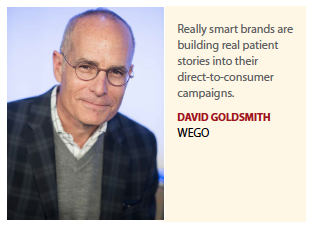 testimonial and should be something that is kindred to the experiences of other similar patients, educational, and drives understanding."
testimonial and should be something that is kindred to the experiences of other similar patients, educational, and drives understanding."
Mr. Dunn believes the industry, in general, has done a better job over the past few years being more customer- and consumer-centric. With a clearer understanding of the patients’ challenges the industry is improving how it gives voice to consumers across their typical journey. The patient and consumer journey map is core to all brands in categories from asthma to diabetes to women’s health.
“The increase in these stories can be seen across unbranded campaigns, social media, and point-of-care advertising with many of these stories designed to help drive successful consumer/HCP dialogs in turn leading to better HCP counseling that empowers shared decision-making and consumer self-efficacy," Mr. Dunn says. “Essentially, we have returned to a core adult learning principle — humans learn through relevant and revealing stories."
David Goldsmith, chief strategy officer at WEGO Health, says the most forward-thinking companies are leveraging patient stories in three ways.
First, they’re sitting down with patients to listen to their stories, to discover hidden insights, to pick up on the sometimes-subtle nuances of managing a complex health condition. “These stories can help marketers shape or reshape their messaging and avoid messaging that lands with a thud," he says.
Second, really smart brands are building real patient stories into their direct-to-consumer campaigns. “We see this in some TV advertisements that feature real patients instead of actors," Mr. Goldsmith says. “We also see this happening in digital campaigns that feature real patient videos made by patients themselves. They are not polished. They are not professionally produced.
They are unvarnished and sometimes unabashedly raw. As such, they offer a peek into the lives of real people with real health challenges. And they are far more likely to be viewed by the patients that pharma brands are trying to connect with. They don’t just drive clicks and views; they drive high-value actions that are measurable and meaningful."
Lastly, Mr. Goldsmith says, WEGO is seeing more companies leverage patient stories to amplify their reach by working with patient influencers to connect with patient communities. “Companies are working with established nano- and micro-influencers who can take their messages and get them out through social media, not just Facebook and Instagram, but channels such as YouTube, Snapchat, and TikTok," he says.
Connecting with the patients — usually through advocacy groups — early in the development of materials is critical, Mr. Beckley adds. “Our clients tend to align with major advocacy groups within their therapy areas; we’re seeing this happen earlier and earlier and they use this relationship to ensure the messaging related to disease is thorough, accurate, and balanced," he says. “Gaining alignment with advocacy groups allows us to work with patients and leaders who have been struggling with language and education, usually far longer than the pharma industry. It also allows us to build foundational relationships with key patient advocates that we can leverage in bringing specific patient stories to life."
Tradeshow tactics that incorporate patient storytelling can also be an opportunity to differentiate, Ms. Hastings says. “Conferences tend to be more clinically focused in messaging and therefore miss the opportunity of standing out or making an emotional connection with the audience — essentially being memorable in a forum in which everyone is communicating the same story," she says.
“Patient testimonial videos have been a traditional method of patient storytelling within a tradeshow setting, but I believe that is only scratching the surface of what could be done and how these narratives can be incorporated into this setting. As virtual experiences become more common, I suspect we will see more marketers integrate patient stories into the tradeshow space in the future."
Another recent avenue is having patients communicate a clinical story or content to the healthcare professional audience. An example would be a mechanism of action video in which an actual patient is integrated into the process as the video narrator. “While this isn’t necessarily a patient telling his or her own story as part of the message, it demonstrates a unique and compelling way to communicate this type of clinical information to a professional audience. It also serves as a reminder of why we all come to work every day — to help patients in need of life-changing treatments," Ms. Hastings says.
Educating Stakeholders Via Patient Stories
To illustrate how important the role of the patient story is to pharma companies, Ric Cavieres, president at OZ, tells us one. About five years ago, he says, he was helping a top 10 pharma company define its global patient-centric strategy. As part of this, and to help inform the new 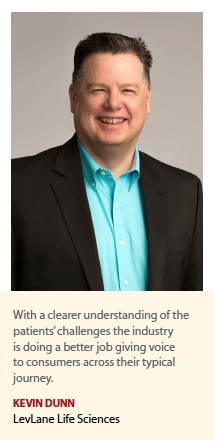 strategy, a leading patient advocate was invited to tell his story to a broad group of the pharma company’s employees.
strategy, a leading patient advocate was invited to tell his story to a broad group of the pharma company’s employees.
The patient told the group about his diagnosis 15 years ago of an aggressive form of cancer and how his specialists gave him less than six months to live. He didn’t take that prognosis lying down and persisted, and an eminent oncology specialist managed to have him enrolled in a new experimental treatment. That treatment saved his life.
He stepped down from his role as a top executive at a Fortune 100 company and his next 15 years were dedicated to patient advocacy and healthcare policy change on Capitol Hill. In that time, he had repeatedly reached out to the pharma company that had developed the treatment to express his gratitude for saving his life, but there were no stakeholders or cadence in place for that to happen. That, combined with a legal regulatory wall, meant he wasn’t simply able to say, “thank you."
When the patient advocate finally got the opportunity to express his deep gratitude to the group, the pharma employees present were very moved. “The impact on the pharma employees who heard about his journey was profound," Mr. Cavieres says. “This helped shape a new patient-first strategy and model for this company."
Having direct input from patients is by far the best way to relate patients’ stories to those within pharma and to ensure that these accounts are weaved into the fabric of pharma companies and their people’s mission. “Yet, today, this is not the norm, but it can become that way if pharma companies are willing to change and take action to make it happen," Mr. Cavieres says.
Similarly, PPD, a CRO company has used patient stories to educate its organization and to remind its employees that what the company does is personal to patients. Hearing from patients about what it means to live with a condition and why clinical trials are so important to them is hugely inspiring. This practice reminds employees that their work can make a difference and that is hugely motivating. “It’s one thing to work on a Duchenne’s muscular dystrophy study but to actually hear from a young boy or his parent about what a day in their life is like takes the significance of our work to another level," says Rhonda Henry, VP, site collaborations and patient centricity, PPD. “Every employee, regardless of the task they perform, plays a significant role in helping our clients bring life-changing treatments to patients."
Risks of Patient Stories in Pharma Marketing Messages
One of the reasons pharma may be lagging in using patient stories is because there are definitely regulatory risks, as well as the risk of choosing a patient story that does not resonate with the target audience.
“While using patient narratives can make a message or story more credible for a consumer audience, it could, in turn, negatively impact credibility in the professional space," Ms. Hastings says. “Being able to back up a patient story with cold, hard facts can help combat the potential ‘this is only one patient’ objection."
Accompanying patient stories with data for the HCP audience also is a 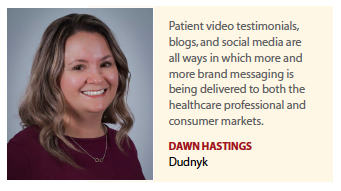 way to negate the belief that the patient story has been influenced or cherry picked to portray a one-sided message. Remember that there is strength in numbers — the more patient stories, the more believable the message becomes to the professional audience, she adds.
way to negate the belief that the patient story has been influenced or cherry picked to portray a one-sided message. Remember that there is strength in numbers — the more patient stories, the more believable the message becomes to the professional audience, she adds.
Additionally, there may be some level of risk in using patient stories in pharma messaging within the regulatory environment. Because these stories provide information that may be outside the scope of a brand’s labeling, it often makes it difficult to get the most compelling story for the brand approved by regulators. So, depending on the message and the client’s tolerance of risk, sometimes it is more impactful — and cost effective — to strategically choose where a patient story is used or focus efforts on using patient stories for raising awareness or other educational initiatives.
Ms. Linfante cautions on the potential risks of using patients as influencers. An endorsement can help shape a brand, but disengagement with that influencer for whatever reason could do harm as well. “Sometimes messages can be taken out of context or maybe unrelatable, which can work against the image of a brand," she says. “There is also the issue with payment and perception."
However, Mr. Michael believes the benefits far outweigh any risks. “I think the larger risk is not using patient stories or trying to reach patients without understanding them," he says. “Of course, patients have different stories, and focusing on one story might not relate to some patients.
However, if it is an authentic voice, we’ve seen other patients respect that; they don’t dismiss it."(PV)
~~~~~~~~~~~~~~~~~~~~~~~~~
Patients’ Voices
Melissa Dunford
Their Faces, Our Voices
Substance Use Disorder
@FacesOpioids
I have given talks to legislators and physicians groups on the death of my best friend from an opioid overdose. I discussed how the system failed her and what we can learn to do better and how if she had access to MAT, such as Suboxone, she would still be here.
 Daniel Garza
Daniel Garza
HIV Advocate
In 2003, I was part of a campaign in Texas. I was one of 10 facilitators who traveled through Texas finding, motivating, and training future advocates and activists to visit the Texas capital to speak with representatives and legislators on the need to increase funding for ADAP. We got the largest amount, up to that time. This was a very proud moment for me.
I have used my personal story to help pharmaceutical companies find a better way to reach the Latino community, the LGBT community, and the HIV community. There are different identifiers for each community and some that overlap. It has been very rewarding to see my input considered and then used.
 Amanda Greene
Amanda Greene
Lupus
@LAlupusLady
There is nothing more important than including patient stories in the healthcare and pharmaceutical messaging.
 Emily Levy
Emily Levy
CEO and Co-Founder
Mighty Well
@MightyWell
I first began to share my own story out of a pure desire to make sure other patients don’t have the same terrible experiences with healthcare that I did before I learned how to be an advocate for myself and other patients in the Mighty Well community. Patient stories should be at the center of pharma marketing messages. The patient community, especially patients with chronic illnesses and long-term medical devices, are media savvy these days and can smell inauthenticity a mile away and they will proceed to talk about the disconnect on social media and blogs.
Lisa Lurie
Survivor and Co-founder
Cancer Be Glammed
@CancerBeGlammed
There is tremendous value in patients sharing their stories. When I was diagnosed with breast cancer I had so many questions and concerns about what I was facing. Having the ability to hear from other people who faced similar challenges was so important. For me, patient stories are a great source of information and support. I think patient stories should be an integral part of pharma marketing messages because it provides patients with first-hand feedback about pharma products that may be used for their treatment. Knowing the types of medications that are available and how they helped other people empowers patients with knowledge and opens the door for better conversations with their doctors.
 Sharon Rose Nissley
Sharon Rose Nissley
Founder
Klippel-Feil Syndrome Freedom
@KFS_Freedom;
@Rose_Of_Sharon8
I have shared my experiences — patient story — in many ways, for instance with my peers, through KFS Freedom, through other organizations, in several articles, speaking at medical schools, with medical professionals, and at meetings or events. I have also lobbied in person, online, in letters, to federal legislators for the 21st Century Cures Act, sharing my experiences, and then wrote an article about it.
I am more likely to participate in an initiative or project when someone asks me to. I’ll submit a story or share my experience when I have a personal contact, rather than uploading something to an online portal with no human interaction.
Rare disease patients and advocacy groups are not one size fits all. Adapting is part of our lives. Be sure that your guidelines allow for some flexibility before you discount someone or an organization.
I think that patient experiences in marketing and messaging can be very relatable when done properly without sensationalizing or altering the real-life experience; this needs to be as realistic as possible. People who have a rare disease must be represented with respect.
I suggest allowing a group of people who have a rare disease to review and allow feedback, before releasing final marketing tools or messages. We view things differently due to first-hand life experience. Patient perspective is everything. There are many times patients, myself included, have seen something online and wondered who approved it, or discussed if the content is detrimental to the individual, or to our community. My advice: ask the experts.
Leslie Rott Welsbacher
Lupus and Rheumatoid Arthritis
@leslierott
I think that real patient stories are essential to pharma messaging. One of the gripes I have regarding pharmaceutical company commercials is providing an unrealistic view of what a medication can do. I think using real patients is really important. I also think we aren’t going to help build a playground or bake 1,000 cupcakes. If you want patients to take marketing seriously, pharma companies have to touch them where they are. Will they be able to climb a flight of stairs? This may be the benchmark that real patients use.
Faith Spivey
Cancer, Leukemia
Real patient stories are critical. People feel more comfortable with medications if they know real life stories about a treatment. Actors or famous people just make you feel like you are being sold.
 Monica Theis
Monica Theis
American Cancer Society – Cancer Action Network Ambassador
Parexel Patient Advisory Council
I have shared my own story to educate legislators. I testified in front of the Minneapolis Senate Committee on healthcare reform. From there, I moved on to become an ambassador with the American Cancer Society Cancer Action Network (ACS-CAN) where I told my story at fundraisers, relays, meetings with legislators, and this last fall in Washington, D.C., at the Capitol.
Organizations can make the process easier for patients by offering outlets and opportunities to be heard. Patients have a lot on their plates and so providing them with specific opportunities instead of expecting them to find opportunities themselves will help encourage involvement. Organizations should consider leading storytelling training sessions to help individuals develop their story and learn to share it with smaller groups and eventually larger audiences.
 Mollie Tinnin
Mollie Tinnin
Ulcerative Colitis, Ostomy, Neurogenic Bladder, Depression, Anxiety, PTSD
@chronicallyconnected (Instagram)
I think it’s important to include patient stories in marketing. I want to hear the perspective and experience of someone on the same journey that I am on so I can feel I am making an informed decision.
 Alicia Trautwein
Alicia Trautwein
Autism
@themomkind.com
I love that there are more stories being shared, but they are still very one-sided. These stories are extremely positive, which is great, but not all stories are going to be 100% friendly to each medication. Each patient is different, and each medication affects them differently. I would like to see more stories — both negative and positive. That way, I can make an educated decision based on that information and my personal symptoms and concerns.
~~~~~~~~~~~~~~~~~~~~~~~~~
More Patient Engagement Requires More Cyber Security
 To partner with patients, all healthcare organizations need to seek ways to engage patients “anywhere, anytime" through safe, easily accessible patient portals, telemedicine services, remote monitoring, and the use of portable medical devices. As more organizations embrace digital means of communication, cyber criminals take notice, making it ever more important to build additional security fences around patient portals. At the same time, they need to do so without introducing unnecessary friction or limiting patient accessibility to the portal.
To partner with patients, all healthcare organizations need to seek ways to engage patients “anywhere, anytime" through safe, easily accessible patient portals, telemedicine services, remote monitoring, and the use of portable medical devices. As more organizations embrace digital means of communication, cyber criminals take notice, making it ever more important to build additional security fences around patient portals. At the same time, they need to do so without introducing unnecessary friction or limiting patient accessibility to the portal.
“The industry needs more sophisticated data-defense strategies to remain HIPPA-compliant and protect patient names, birth dates, prescription information, diagnosis codes, and billing information — all high-value commodities on the dark web for creating fake IDs and filing fraudulent claims," says Kathy Johnson, VP, health care, LexisNexis Risk Solutions.
Secure healthcare organizations employ a proactive, multi-layered cybersecurity approach that accounts for the added complexities of 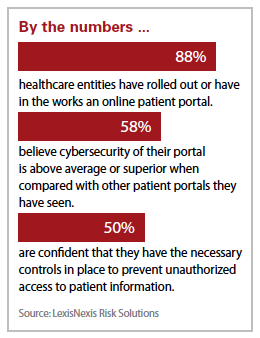 digital identity and device vulnerabilities, while ensuring a safe and compliant delivery-of-care environment. It is often vital to redefine the corporate culture, prioritizing patient-identity management while being alert to threats like phishing scams, ransomware, and vendor or IT/IS spoofing. Multifactor authentication should be the baseline protection to ensure patient identity verification; for example, using knowledge-based questions, one-time passwords, email verification, facial recognition, device analytics, or voice biometrics to authenticate users based on the criticality of transactions. The digital identity of a returning user can be verified in the background through device identification, representing a low friction level to encourage patient engagement. Unusual device or user behavior can trigger step-up authentication using knowledge-based questions or biometrics.
digital identity and device vulnerabilities, while ensuring a safe and compliant delivery-of-care environment. It is often vital to redefine the corporate culture, prioritizing patient-identity management while being alert to threats like phishing scams, ransomware, and vendor or IT/IS spoofing. Multifactor authentication should be the baseline protection to ensure patient identity verification; for example, using knowledge-based questions, one-time passwords, email verification, facial recognition, device analytics, or voice biometrics to authenticate users based on the criticality of transactions. The digital identity of a returning user can be verified in the background through device identification, representing a low friction level to encourage patient engagement. Unusual device or user behavior can trigger step-up authentication using knowledge-based questions or biometrics.



















